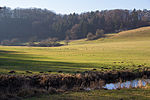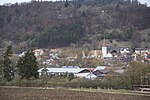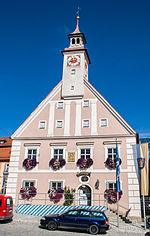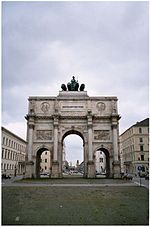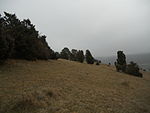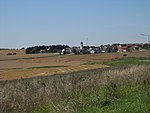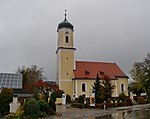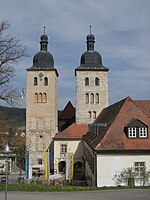Kinding (Altmühltal) station

Kinding (Altmühltal) station is a regional station on the Nuremberg–Ingolstadt high-speed railway in the German state of Bavaria. It is located west of the Upper Bavarian market town of Kinding, near the A 9 at the 58.6 mark (measured from Nuremberg). It is, along with the stations of Allersberg and Ingolstadt Nord, one of three regional stations of the new line between Nuremberg and Ingolstadt. The complex is located between the Schellenberg Tunnel (650 m) to the north and the Irlahüll Tunnel (7260 m) to the south. The station was ceremoniously opened on 6 December 2006 and has been served by trains since 10 December 2006. It has 2 platform tracks and is classified by Deutsche Bahn as a category 6 station.
Excerpt from the Wikipedia article Kinding (Altmühltal) station (License: CC BY-SA 3.0, Authors, Images).Kinding (Altmühltal) station
A 9,
Geographical coordinates (GPS) Address Nearby Places Show on map
Geographical coordinates (GPS)
| Latitude | Longitude |
|---|---|
| N 48.991666666667 ° | E 11.3775 ° |
Address
Kinding (Altmühltal)
A 9
85125
Bavaria, Germany
Open on Google Maps
